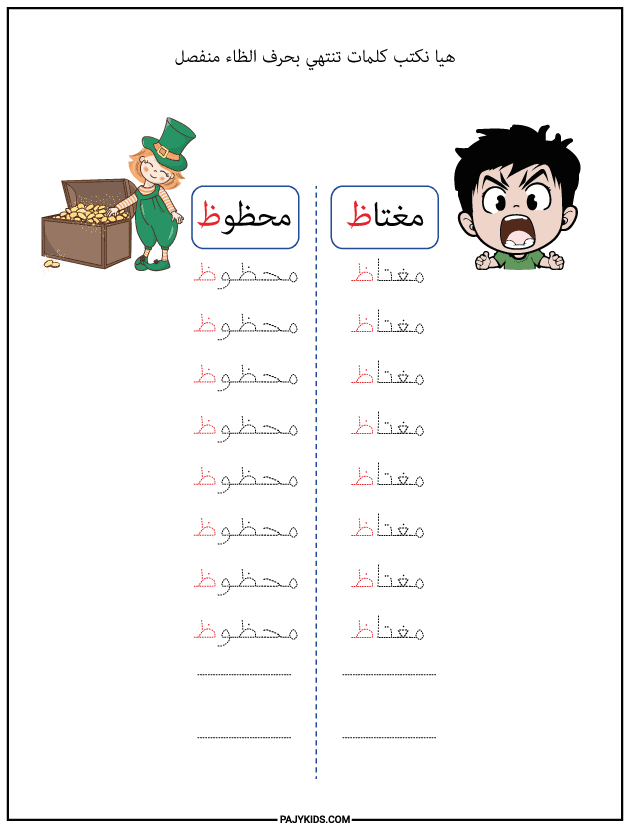The letter Ẓāʼ (ظ) is one of the heavier and more distinctive letters in the Arabic language. Its pronunciation is sometimes confused with Ḍād (ض) by some learners, which makes learning it accurately especially important. Mastery of this letter goes beyond correct pronunciation—students must also understand the different shapes of the letter Ẓāʼ depending on its position in a word, to read and write it correctly. In this lesson, we will explore how the letter Ẓāʼ appears at the beginning, middle, and end of words, in both connected and isolated forms, along with illustrative examples to facilitate learning.
The Shapes of the Letter Ẓāʼ (ظ)
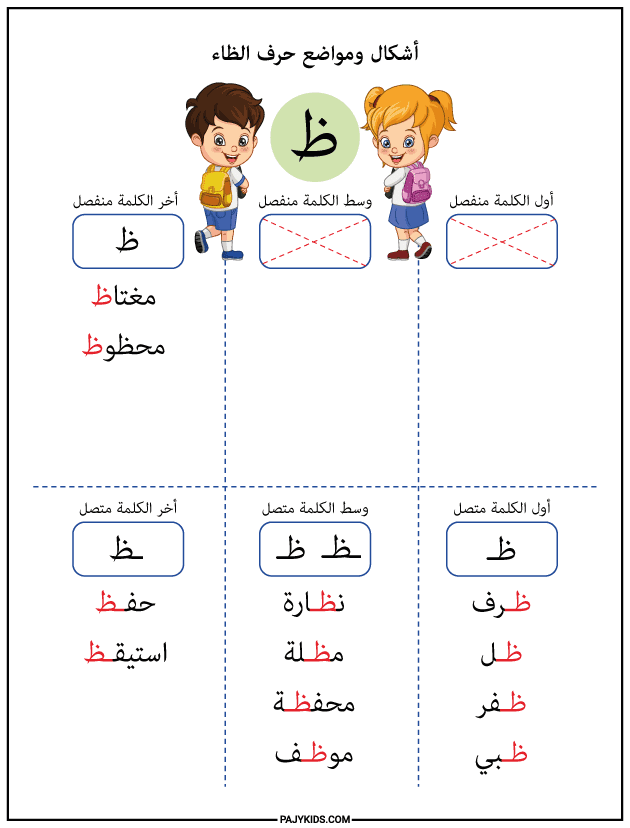
- Form of Ẓāʼ at the Beginning of a Word
When the letter Ẓāʼ appears at the beginning of a word, it connects only to the following letter and is written in the form: “ظـ”.
Examples: ẓarf (ظرف), ẓill (ظل), ẓafar (ظفر).
This shape is characterized by a single dot above the letter, and it slants slightly downward with a small horizontal extension.
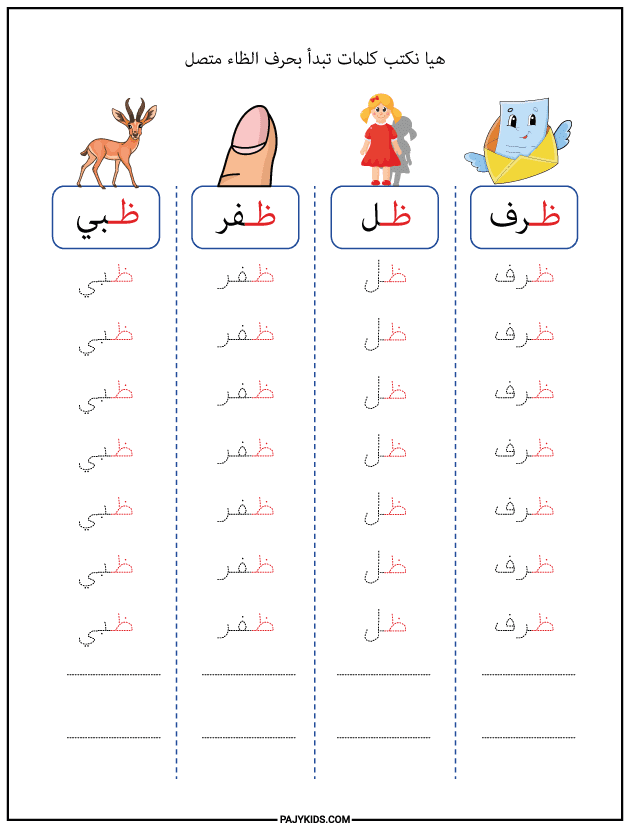
- Form of Ẓāʼ in the Middle of a Word
When Letter Ẓāʼ occurs in the middle of a word, it connects to both the preceding and the following letters and is written as: “ـظـ”.
Examples: naẓẓārah (نظارة), miẓallah (مظلة), maḥfaẓah (محفظة).
In this position, the letter blends smoothly with its neighboring letters, and the dot above remains clearly visible, which helps distinguish it from other similar letters.
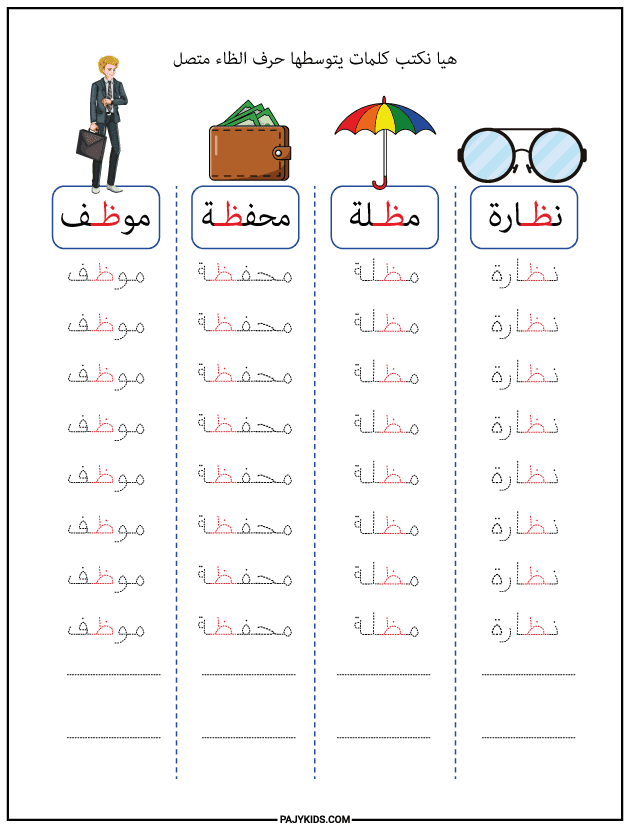
- Form of Ẓāʼ at the End of a Word (Connected)
When Letter Ẓāʼ appears at the end of a word and is connected to the previous letter, it is written as: “ـظ”.
Examples: ḥafaẓa (حفظ), istayqaẓa (استيقظ).
Although it comes at the end of the word, the connected form of the letter remains clear and maintains its full structure, including its distinctive curve and dot.
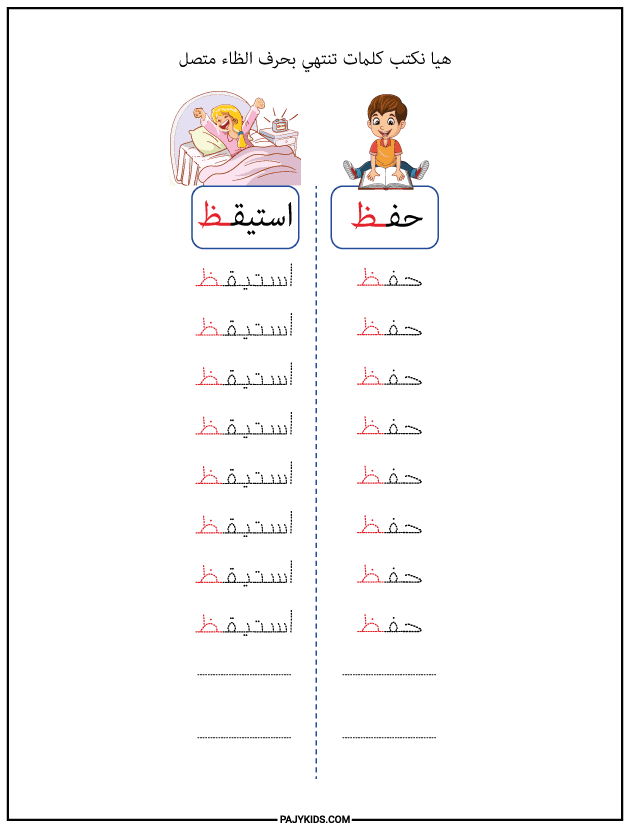
- Form of Ẓāʼ at the End of a Word (Isolated)
If Letter Ẓāʼ appears at the end of a word after a letter that does not connect, it takes its isolated form: “ظ”.
Examples: mughtāẓ (مغتاظ), maḥẓūẓ (محظوظ).
This form sits on the line clearly, with the dot firmly placed above it, making it easy for the reader to recognize.
